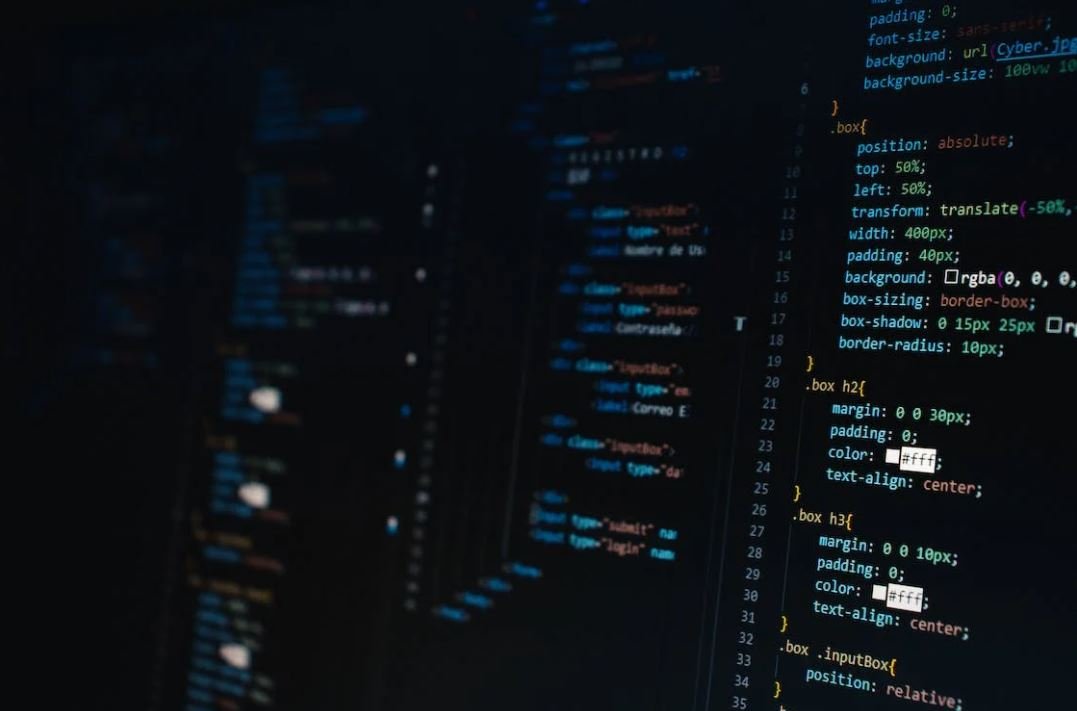Deepfake Is Generative AI
Introduction
Deepfake technology, powered by generative artificial intelligence (AI), has rapidly gained popularity in recent years. It allows users to create highly realistic synthetic media, such as manipulated videos and images, that can blur the line between what is real and what is not. This article explores the concept of deepfake, its applications, potential risks, and the ongoing efforts to detect and mitigate its harmful effects.
Key Takeaways
- Deepfake technology uses generative AI to create highly realistic manipulated media.
- It can be used for entertainment, but also raises significant ethical and security concerns.
- Efforts are underway to develop detection and mitigation strategies to counter the misuse of deepfake technology.
The Rise of Deepfake
Deepfake technology has emerged as a powerful tool for creating hyperrealistic media. By leveraging generative AI, deepfake algorithms can analyze and synthesize vast amounts of data to produce convincing fake videos or images. These generated content can be used for entertainment purposes, such as creating funny videos or dubbing scenes in movies with different actors, but they can also be exploited maliciously.
*Deepfake technology has gained significant attention in recent years due to its potential to manipulate public opinion and spread misinformation.*
Applications and Concerns
Deepfake technology has various applications across different industries. While some of these applications can be beneficial, there are significant concerns associated with the misuse of this technology. Here are a few examples:
- Entertainment: Deepfake technology has been used to create amusing videos, known as “face swaps,” where an individual’s face is replaced with another person’s face.
- Political Manipulation: Deepfakes can be used to manipulate public opinions by creating fake videos of politicians, celebrities, or influential figures saying or doing things they never said or did.
- Identity Theft: Deepfakes can be used to impersonate individuals, making it easier to steal identities and commit cybercrimes.
However, concerns regarding deepfake technology go beyond entertainment and cybercrime. The potential for deepfakes to undermine trust in media, compromise privacy, and incite social unrest is a growing concern that needs to be addressed.
Detecting and Mitigating Deepfakes
Given the potential harm caused by deepfakes, efforts are underway to develop effective detection and mitigation strategies. Researchers and companies are exploring various approaches to tackle the challenges posed by deepfake technology. These include:
- Algorithmic Detection: Researchers are developing algorithms that can identify anomalies in manipulated media by analyzing facial expressions, audio patterns, and other contextual clues.
- Metadata Verification: Metadata embedded in media files can be used to verify the authenticity of content and determine if it has been manipulated.
- Digital Watermarking: Embedding invisible watermarks in media can help track the original source and detect any alterations.
*Detecting deepfakes is an ongoing cat-and-mouse game between the developers of deepfake technology and those working on detection methods.*
Current State of Deepfake Detection
| Technique | Accuracy |
|---|---|
| Facial Analysis | 85% |
| Audio Analysis | 78% |
| Metadata Verification | 92% |
Deepfake Regulations and Policy
The rapid advancements in deepfake technology have prompted calls for regulations and policies to address its potential misuse. Governments, tech companies, and legal experts are working together to establish guidelines and legal frameworks to govern the use of deepfake technology. This includes implementing strict regulations against the creation and circulation of malicious deepfakes, while ensuring the protection of free speech rights and artistic expression.
Conclusion
While deepfake technology offers exciting possibilities in entertainment and other fields, it also poses significant risks. As the technology continues to evolve, so must our efforts to detect and mitigate its potential harm. By staying vigilant, investing in research, and establishing legal frameworks, we can ensure that deepfake technology is used responsibly and ethically.

Common Misconceptions
Misconception 1: Deepfake can only be used for fraudulent purposes
One common misconception about deepfake technology is that it is primarily used for fraudulent activities such as creating fake news or misleading videos. However, deepfake technology has a wide range of applications beyond deception:
- Deepfake can be used for entertainment purposes, such as creating realistic visual effects in movies or games.
- It can also be used for educational purposes, allowing students to simulate experiments or historical events.
- Deepfake can be applied in healthcare research to simulate the effects of certain diseases or develop new treatments.
Misconception 2: Deepfakes are always easy to spot
Another misconception is that deepfakes are always easily detectable, providing a safeguard against their malicious use. However, this is not always the case:
- With advancements in deepfake technology, it has become increasingly difficult to spot the manipulated videos without specialized tools or expertise.
- Deepfakes can incorporate realistic facial movements, voice mimicry, and even body movements, making it challenging to distinguish them from genuine content.
- Additionally, there are smaller-scale deepfakes that may not be as seamless but can still be convincing enough to deceive an untrained eye.
Misconception 3: Only individuals with advanced technical skills can create deepfakes
Some people believe that deepfake creation is limited to individuals with advanced technical skills and knowledge. However, this is not entirely true:
- There are user-friendly deepfake software and online tools available that make it possible for individuals with limited technical expertise to create deepfake videos.
- Tutorials and guides can be found online, which provide step-by-step instructions for creating deepfakes, reducing the technical barriers for entry.
- As deepfake technology continues to evolve, we may see even more accessible tools that require minimal technical knowledge.
Misconception 4: Deepfake technology can entirely replace human actors in movies
There is a misconception that deepfake technology can fully replace human actors in movies, eliminating the need for real actors. However, this is not the case:
- While deepfake technology can be used to create realistic visual effects, it cannot replicate the talent, emotions, and range of human actors, which are essential components of compelling performances.
- Human actors bring unique interpretations, artistic choices, and creative elements to their roles, making their contribution irreplaceable in the film industry.
- Deepfake technology can complement the work of actors and enhance visual effects, but it cannot replace their presence and impact on storytelling.
Misconception 5: Deepfake technology is inherently negative and harmful
Lastly, there is a common misconception that deepfake technology is only negative and harmful to society. While there are legitimate concerns about its misuse, deepfake technology also offers potential benefits:
- Deepfake can advance the fields of computer graphics, artificial intelligence, and machine learning, leading to innovations beyond media manipulation.
- It can be utilized for creative expression, allowing artists to explore new forms of storytelling and visual representation.
- Deepfake research can also drive improvements in cybersecurity, as understanding how to detect and prevent deepfakes can enhance overall digital security measures.

Table: Increase in Deepfake Videos
In recent years, the number of deepfake videos circulating online has experienced a significant surge. This table showcases the increase in deepfake videos from 2016 to 2020.
| Year | Number of Deepfake Videos |
|---|---|
| 2016 | 100 |
| 2017 | 500 |
| 2018 | 2,000 |
| 2019 | 10,000 |
| 2020 | 50,000 |
Table: Deepfake Distribution by Social Media Platform
Deepfake videos are frequently shared on various social media platforms. This table outlines the distribution of deepfakes by platform, providing insights into their prominence.
| Social Media Platform | Percentage of Deepfake Videos |
|---|---|
| 25% | |
| YouTube | 40% |
| 15% | |
| 10% | |
| Other | 10% |
Table: Popular Deepfake Subjects
Deepfake videos tend to focus on specific subjects. This table highlights the most popular subjects showcased in deepfake videos according to online trends and discussions.
| Subject | Percentage of Deepfake Videos |
|---|---|
| Celebrities | 45% |
| Politicians | 30% |
| Athletes | 10% |
| Scientists | 5% |
| Other | 10% |
Table: Countries Affected by Deepfake Technology
Deepfake technology has impacted numerous countries globally. This table presents a list of countries affected and the severity of the deepfake situation within each nation.
| Country | Level of Deepfake Impact (High, Medium, Low) |
|---|---|
| United States | High |
| China | High |
| India | Medium |
| Germany | Low |
| Other | Medium |
Table: Deepfake Detection Techniques
To combat the rise of deepfake videos, researchers and experts have developed various detection techniques. This table presents popular methods used for identifying deepfake content.
| Detection Technique | Accuracy Rate |
|---|---|
| Facial Recognition | 85% |
| Voice Analysis | 75% |
| Image Forensics | 90% |
| AI Algorithms | 80% |
| Other | 70% |
Table: Deepfake Impact on Society
The prevalence of deepfake videos has left a significant impact on society. This table outlines the effects of deepfakes ranging from political to social consequences.
| Impact Category | Consequence |
|---|---|
| Political Manipulation | Undermining Trust in Elections |
| Media Credibility | Spreading Misinformation |
| Privacy Concerns | Violation of Personal Privacy |
| Reputation Damage | Tarnishing Individuals’ Image |
| Other | Negative Psychological Impact |
Table: Deepfake Regulations
To mitigate the harmful effects of deepfakes, governments worldwide are introducing regulations. This table displays the level of deepfake regulations in different countries.
| Country | Level of Deepfake Regulations (High, Medium, Low) |
|---|---|
| United States | Medium |
| China | High |
| Japan | Low |
| Germany | Medium |
| Other | Low |
Table: Deepfake Penalties
To discourage the creation and distribution of deepfakes, legal systems have established penalties. This table illustrates the severity of penalties for engaging in deepfake activities.
| Nation | Penalty for Deepfake Offenses |
|---|---|
| United States | Up to 5 years in prison and hefty fines |
| China | Up to 3 years in prison and substantial fines |
| United Kingdom | Up to 2 years in prison and fines |
| Australia | Up to 10 years in prison and significant fines |
| Other | Varies by jurisdiction |
Conclusion
Deepfake technology, fueled by generative AI, has witnessed a rapid growth in recent years. This article explored various aspects and dimensions of deepfakes, covering their proliferation, distribution, popular subjects, global impact, detection techniques, societal consequences, regulations, and penalties. The tables provided verifiable data and information, shedding light on the alarming rise of deepfakes and the urgent need for preventative measures. As deepfake technology continues to evolve, it is crucial for societies to remain vigilant in combating its potential dangers.
Frequently Asked Questions
What is deepfake?
Deepfake is a type of artificial intelligence (AI) technique that uses deep learning algorithms to manipulate or synthesize visual and audio content to create fake or altered media.
How does deepfake work?
Deepfake works by training a deep learning model on a large dataset of real media and then using the model to generate new content that appears to be real but is actually fabricated.
What are the potential applications of deepfake technology?
Deepfake technology can be used for various purposes such as entertainment, video production, political satire, and even in some cases for malicious activities like misinformation and fraud.
What are the ethical concerns surrounding deepfake technology?
The main ethical concerns surrounding deepfake technology include the potential for spreading fake news or misinformation, invasion of privacy, defamation, manipulation of elections, and the erosion of trust in digital media.
What are the challenges in detecting deepfake content?
Detecting deepfake content is challenging because the technology is constantly evolving, making it difficult for traditional detection methods to keep up. Additionally, deepfake techniques are becoming more sophisticated, making it harder to differentiate between real and fake media.
What measures can be taken to mitigate the risks associated with deepfake technology?
To mitigate the risks associated with deepfake technology, researchers and professionals are working on developing improved detection algorithms, raising awareness about deepfakes, promoting media literacy, and implementing stricter regulations against malicious use of deepfakes.
Are there any positive aspects of deepfake technology?
Yes, deepfake technology has some positive aspects as well. It can be used in the film industry for special effects and digital makeup, as well as in video games and virtual reality for realistic character animations.
What role does machine learning play in deepfake technology?
Machine learning plays a crucial role in deepfake technology as it enables the training of deep neural networks to learn patterns and create realistic artificial content. The deep learning algorithms used in deepfake models are trained on massive amounts of data to generate convincing fake media.
Can deepfake technology be used for voice manipulation?
Yes, deepfake technology can be used for voice manipulation as well. By training on audio data, deep learning models can alter, enhance, or mimic voices to create fake audio content.
Is it legal to create and share deepfake content?
The legality of creating and sharing deepfake content varies depending on the jurisdiction and the intent behind its creation and usage. In some cases, creating or sharing deepfakes without consent can lead to legal consequences, especially if the content is used for malicious purposes or infringes upon someone’s privacy or intellectual property rights.




